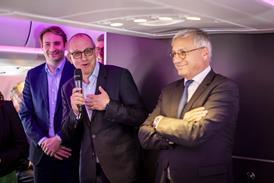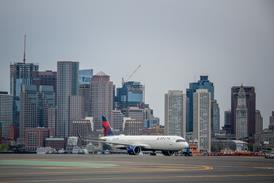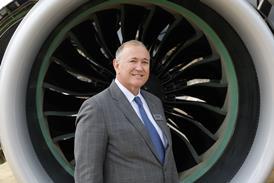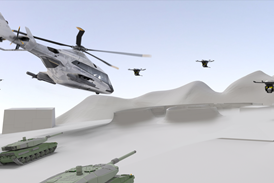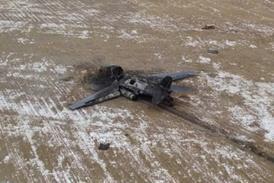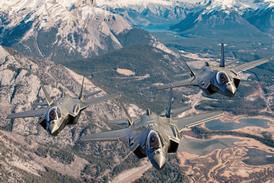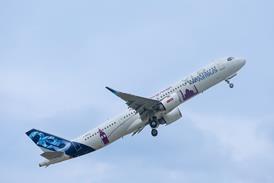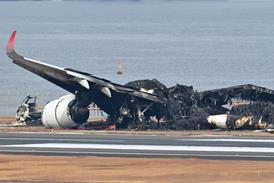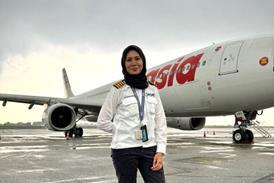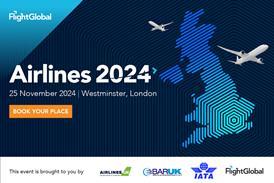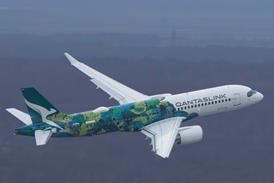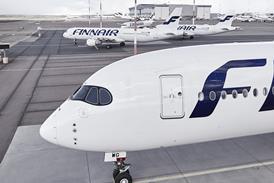
John King/TEKAPO
IN common with other countries with deregulated aviation industries, New Zealand has seen a proliferation of small airlines in recent years. Also in line with experience in many countries, some of those carriers have met problems.
It is the old story of enthusiasm attracting under-capitalised players into setting up small organisations to fill a niche, often with inadequate back-up. While they may at first operate with outward efficiency, after a while cracks start to show and can lead to incidents.
Two small New Zealand airlines - Soundsair, with a Cook Strait operation, and United Aviation, with a wider network of freight and passenger services in the lower North Island - have had public problems in recent months. Each had a fatal accident and was grounded by the Civil Aviation Authority of New Zealand (CAANZ). United has been grounded permanently, such was the state of its in-house technical and engineering work.
BAD APPLE
Such difficulties affect far more than those directly involved. "One of the problems - and it's an industry problem - is that the bad apple in the barrel makes the rest of the industry look bad," says Martyn Gosling, CAANZ communications co-ordinator. "If there's an accident, or the CAANZ takes action against an operator, similar operators are tarred with the same brush," he points out.
That is one reason for the instigation of the CAA NZ's Director of Civil Aviation Awards. Presented annually in two categories, they "-reward individuals and organisations who, through their actions, have encouraged others to adopt a similar safety ethos and who recognise that aviation is safe only when individuals and organisations accept the safety responsibility".
Director Kevin Ward says that the 1996 winning organisation, Air Safaris and Services (NZ), "-set standards and fly to them, and are respected as capable advocates with a sound knowledge of engineering and technical matters".
Richard Rayward, chief executive and operations manager of Air Safaris and Services (NZ) is matter of fact, however. "You're always thinking of the business and, with the nature of this sort of operation, you can't really plan." After nearly 30 years of operations, he says that he still enjoys it. "We have a marvellous team-and we're very strict on safety procedures."
Rayward, then a cameraman with New Zealand's National Film Unit, learned to fly in the early 1960s as a challenge and then, to gain experience and change his lifestyle, sank his savings into a Cessna 180 on the rugged west coast of New Zealand's South Island in the early days of venison recovery by air.
From such beginnings, Air Safaris started in 1970. Still with his Cessna 180 and a new charter licence, Rayward teamed up with Graeme Murray and, with Laurie and Malcolm Prouting of Mesopotamia sheep station, started flying hunters from the homestead airstrip on the Rangitata River into the Southern Alps. The pilot was the guide and flew hunters, deerstalkers and hikers to and from Christchurch Airport and on to Mount Cook. The company logo, a stylised chamois (a wild goat-like antelope which inhabits the region), dates from the beginning of Air Safaris.

SCENIC START
By 1974, growing controversy over access to the South Island high country led Rayward and Murray to start scenic flying, using a brand-new Cessna 185, from a grass airstrip on a farm at Lake Tekapo. Business built up quickly, and a new Cessna 206 soon joined the fleet, with still "a reasonable amount of back-country work" and ski touring at Tekapo from 1976.
The biggest step in the first decade came with a Pilatus Turbo-Porter in 1978. "We were always aware of the impact of aircraft on the wilderness areas," says Rayward, "and we had more of the smaller aircraft all doing the same thing. The turbine was quieter and offered better economics and less congestion.
"We've always tried to have a mix, and we had the Porter eight years. It put the company on the map with a different profile, although we were still taking hunters into strips at that stage and operated on skis in the winter."
Cessna 207s then became the mainstay, able to carry three couples (always a factor with tourists), and the first GAF Nomad arrived in 1981. By then, the airline had moved out of back-country work, helicopters having taken over what Rayward calls "a lot of fun, but with a reasonably high risk of bending machinery". Bush flying, skiplane operations, survey work, sheep spotting, film work and carrying passengers into remote sheep stations offered plenty of diversification in the days before Air Safaris became a general passenger and charter operator.
The fleet now includes five 15-passenger N24A Nomads, four Cessna 207s and two Cessna 177 Cardinals, plus a 206 now for sale. That six-seater and one of the Cardinals were part of Kevin Burns' Westair, based at its own airstrip at Franz Josef Glacier on the west coast, which was taken over in April 1996.
"It's a complementary operation," says Air Safaris chief pilot Geoff Ensor, "a different market. The Coast gets more of the FITs - free independent travellers." More flights are operated from there to the scenic fiord of Milford Sound, but locally based helicopters are in competition.
On the windward side of the Southern Alps, and so in a high-rainfall area, Franz Josef also has fewer possible flying days than inland Lake Tekapo, which enjoys New Zealand's highest number of annual hours of sunshine and is perhaps 99% flyable - although the wind can make conditions rough in the mountains and unsuitable for passengers. It also has a reputation for having the clearest air in the Southern Hemisphere: nearby is the Mount John astronomical observatory.
The Mackenzie Country, a large mountain basin, has New Zealand's closest approximation to a continental climate. Lake Tekapo's 840m (2,750ft) sealed runway, at 2,500ft, shares the distinction with slightly lower (but wetter) Mount Cook and Glentanner as being the only airfields needing regular snow clearance in the winter.
The region needs its own breed of pilots. "One of the prerequisites is that you enjoy the mountains," says Rayward."Yes, the weather in the Mount Cook area is probably the most severe in the country, but, if you only went in perfect conditions, you'd soon go out of business." Ensor points out: "There's a fine line between operations and problems. We believe strongly in good training, a good local knowledge and the need to fly defensively at all times."
Although all the scenic flying is single-pilot visual-flight-rules work, one branch of the airline's activities allows two of the instrument-rated pilots to remain current. One Nomad is used from Timaru to fly the Air Nelson scheduled service to Christchurch on Monday mornings and Friday evenings and, although the Nomad is comparatively slow and has single-engine limitations for instrument-flight-rules work, conditions over the flat Canterbury Plains along the route suit the aircraft well.
The Nomad has never been popular in its native Australia, perhaps because it was a homegrown product conceived as a military aircraft, without much input from civilian operators. It was given short-take-off-and-landing capability in a wide-open country, flown by pilots who wanted something sleek and fast, and so ended up suiting nobody in particular - except Air Safaris, perhaps its largest civilian operator.
"It fits our requirements to a T," says Rayward. "All the passengers have window seats and it has a high wing. In general aviation, the public likes to look down. A lot of small things were a big annoyance in constant use and have needed development, such as gas struts instead of the mechanical stays for doors. But flown conservatively, within its design envelope, there's no problem."
As with some other aircraft which have gained undeservedly bad reputations, the Nomad has had its share of problems in other countries, leading to adverse publicity. The tail came off an Australian example, attributed to the stress of 200h of ground running at full power on one engine, and a Caribbean Nomad suffered a bent aileron. That led to the Australian Civil Aviation Safety Authority (CASA) imposing the serious and impractical flap limitation of no more than 10¹, but the CAANZ took the more practical approach of allowing use of the full flap range, but at the lower airspeed of 90kt (165km/h), a limitation later adopted by CASA.
One of Air Safaris' Nomads went to Australia in 1996 on a contract for re-certification of the flap/aileron system, fitted with Boeing Aircraft Systems' own test ailerons, fully instrumented with strain gauges. "It did the flight from New Zealand to Avalon, around 50h of test flying and back home again without a snag," says Rayward.
Even in New Zealand, where tourist airlines are relatively common, Air Safaris stands out - as shown by its Award. To maintain a culture of safety and discipline among eight full-time pilots in a region of serious weather conditions, not to mention an air of cheerfulness when that same weather has kept the aircraft grounded for days, needs a leader of more than average ability. The airline reflects the attitude of Rayward.
Source: Flight International

